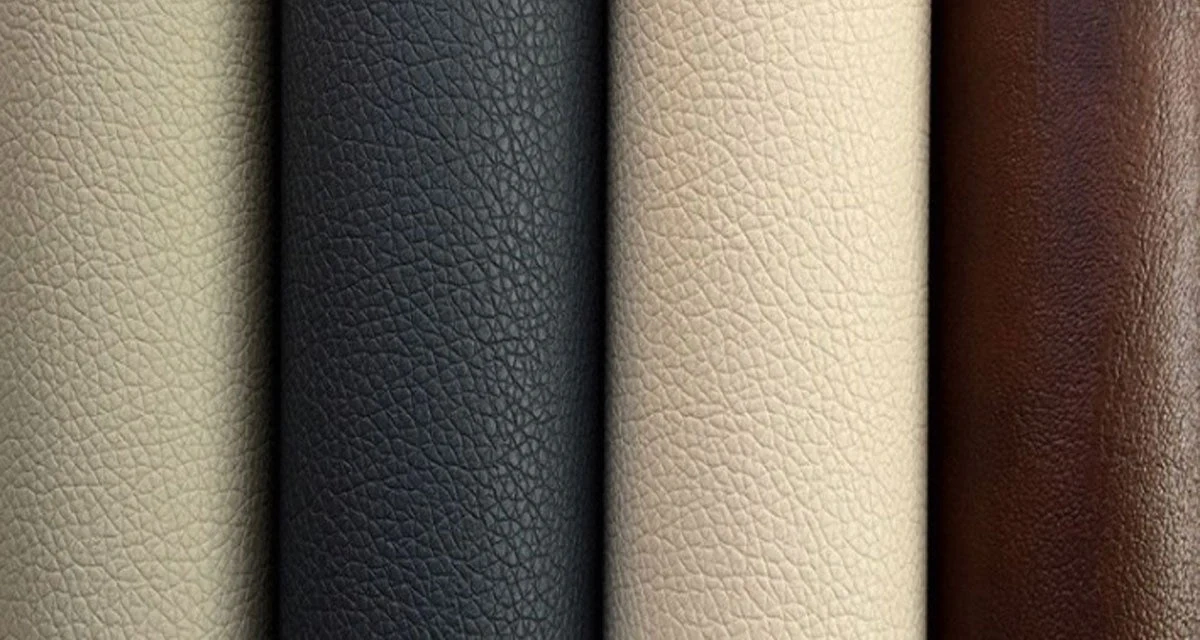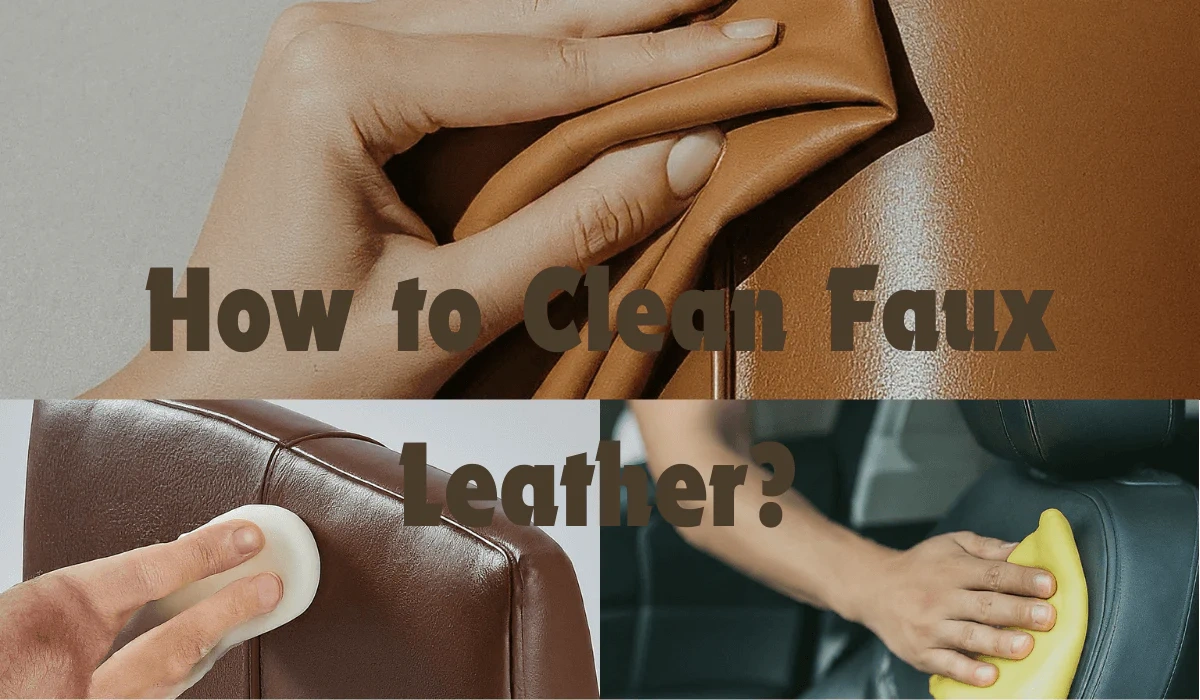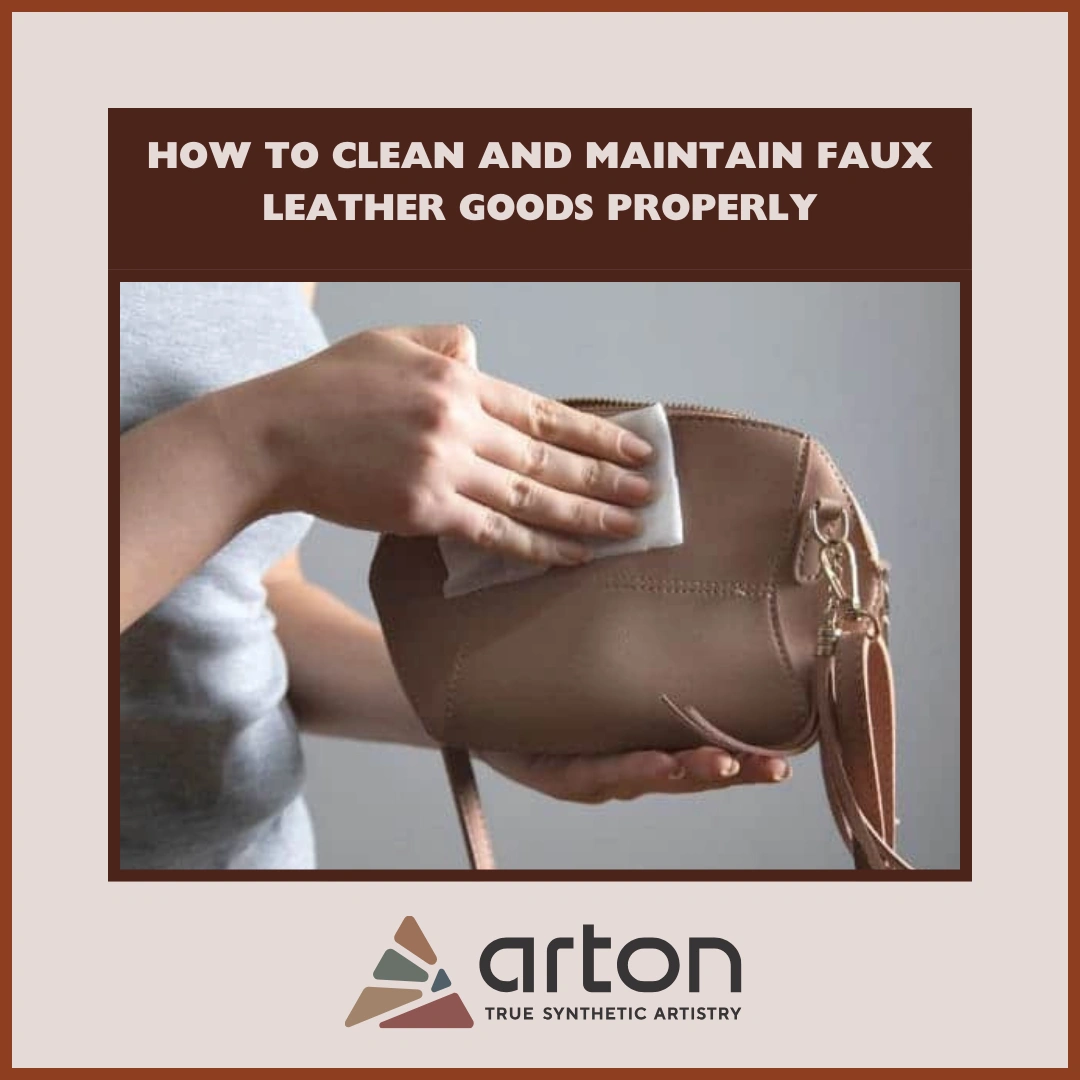07 September, 2025
Faux leather has continued to be a choice of genuine leather that gives a style, durability, and its low cost without losing the beauty. Just as in the case of a handbag, sofa, jacket or car seat, good maintenance of faux leather products can make them last longer and remain new-looking and attractive. However, faux leather (also known as synthetic leather or leatherette fabric) needs a somewhat different procedure of caring, compared to genuine leather, which must be conditioned and polished.
This guide will take you through the proper care and maintenance of your faux leather material, and simple steps to follow to keep your investment in good condition.
What is Faux Leather?

Faux leather- Also referred to as faux-leather is an artificial material made to resemble the appearance and texture of real leather. It is usually made of artificial materials like polyurethane (PU) or polyvinyl chloride (PVC) so that it is not prone to cracking and fading. Some people find the advantage of fake leather products because they are cheaper.
Eco-friendly substitutes (no use of animal products).
-
Cheaper than real leather.
-
Flexible in design and colors.
-
Low-maintenance and easier cleaning methods.
It is also referred to as terms such as leatherette fabric, which is a non-authentic leather used in upholstery, fashion, and vehicle interiors.
Understanding Faux Leather Material
Faux leather material is crafted by coating a fabric base (often polyester or cotton) with polyurethane (PU) or polyvinyl chloride (PVC). This combination creates the luxurious appearance of leather while being more affordable and vegan-friendly.
Key differences from real leather include:
-
Less breathable than natural hides
-
Uniform texture (no natural imperfections)
-
Easier to manufacture in multiple colors and textures
-
Non-biodegradable but animal-free
Common types of leatherette fabric:
-
PU leather: softer, more flexible, better for clothing
-
PVC leather: harder, durable, often used in upholstery
-
Printed faux leather: embossed or patterned versions for bags or décor
Why Does Faux Leather Need Special Care?
Unlike natural leather, faux leather material doesn’t breathe, making it prone to wear and tear if neglected. Over time, dirt, sweat, and spills can cause peeling, cracking, or fading. Regular cleaning not only enhances appearance but also prolongs the durability of leather goods.
What Cleaning Products Are Safe for Synthetic Leather?
Safe options include:
-
Mild dish soap diluted in water
-
Vinegar-water mixture (50/50) for deodorizing
-
Specialty cleaners labeled for leatherette fabric or synthetic leather
Products to avoid:
-
Bleach or ammonia-based cleaners
-
Alcohol or acetone
-
Oil-heavy conditioners (clog surfaces and attract dirt)
DIY Recipe: Mix 2 drops of dish soap in warm water, dip a microfiber cloth, wring it out, and gently wipe the surface.
What Tools Do You Need for Proper Maintenance?
-
Microfiber cloths: avoid scratches
-
Soft-bristle brush: for textured materials
-
Protective covers: storage for handbags or upholstery
-
Breathable boxes/packs: storage solutions that prevent dampness
How to Clean Faux Leather Goods at Home

Caring about the faux leather, no special cleaners are needed. Using the right techniques, you can easily retain its smooth finish and shine.
1. Clean Dusting and Wiping
Clean using a microfiber cloth to remove any dust and dirt. Day-to-day cleaning can be achieved with a damp cloth used to keep the surface fresh.
2. Soap and Water Solution
Put a few drops of gentle dish soap in water. Dip a cloth in the solution, wring it out and gently wipe the surface of your leatherette fabric. Do not soak the material because excessive water can harm the finishing
3. Stains- Vinegar and Water
To treat hard stains, mix equal parts of white vinegar and water. Test on a small secretive spot prior to applying to the whole surface. Use a soft cloth and dry at once.
4. Use Alcohol on Ink Marks
Handbags or jackets are often spotted with ink stains. Use a cotton ball and rub diluted alcohol to the area. Do not rub, as this can cause the stain to expand.
How to Maintain Faux Leather Goods for Longevity
Cleaning alone isn’t enough. Proper maintenance ensures your faux leather material retains its charm over time.
1. Keep Away from Direct Sunlight
Exposure to sunlight can cause fading and cracking. Always store your synthetic leather goods in a cool, shaded place.
2. Avoid Harsh Chemicals
Bleach, ammonia, or abrasive cleaners can strip off the protective coating. Stick to mild cleaning agents designed for faux leather.
3. Use Protective Sprays
Specialized faux leather sprays add a layer of protection against spills and stains. Apply occasionally to maintain the finish.
4. Moisturize with Baby Oil or Conditioner
Unlike genuine leather, faux leather doesn’t require heavy conditioning. A small amount of baby oil or petroleum jelly applied with a soft cloth keeps the surface supple.
5. Store Properly
When not in use, store leather goods in dust bags or covers to prevent scratches and dust buildup. Avoid folding items like jackets or bags, as creases can become permanent.
Common Mistakes to Avoid When Caring for Faux Leather
-
Over-wetting the material: causes water damage.
-
Using rough clothes: may scratch the surface.
-
Ignoring spills: can lead to stubborn stains.
-
Not cleaning regularly: allows dirt to harden and weaken the fabric.
Final Thoughts
Caring for faux leather goods is simple, cost-effective, and requires only a few household items. Whether it’s a sofa, jacket, or handbag, a consistent cleaning routine and mindful maintenance will help you preserve the look and feel of your favorite accessories. By following the cleaning tips and maintenance practices shared here, you’ll ensure your faux leather material remains durable, stylish, and comfortable for years to come.
As a leading manufacturer and supplier, Rock Uniquoters continues to set benchmarks in delivering premium faux leather solutions tailored for furniture, automotive, upholestery, fashion, and interior design applications. With a strong focus on innovation, craftsmanship, and eco-friendly practices, Rock Uniquoters ensures every product meets global standards of performance and aesthetics.
FAQs
1. How to clean and condition faux leather?
Wipe with a damp cloth and mild soap; condition lightly with baby oil or faux leather conditioner.
2. How to keep faux leather looking new?
Clean regularly, avoid sunlight and heat, condition occasionally, and store properly.
3. Is faux leather easy to keep clean?
Yes, it’s low-maintenance and only needs wiping and occasional deep cleaning.
4. How to preserve a faux leather bag?
Store in a dust bag, keep it empty when not in use, wipe spills, and condition lightly.
5. How do you protect faux leather from peeling?
Avoid harsh cleaners, heat, and sunlight; apply light conditioner to maintain flexibility.
6. What is the lifespan of faux leather?
Typically 5–10 years with proper care.



